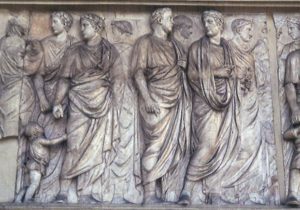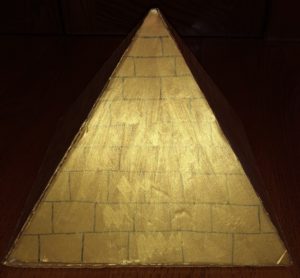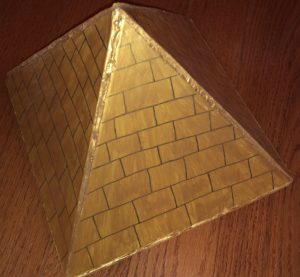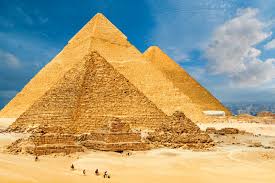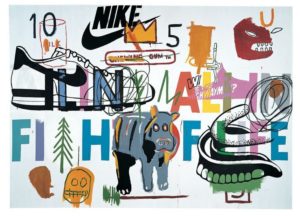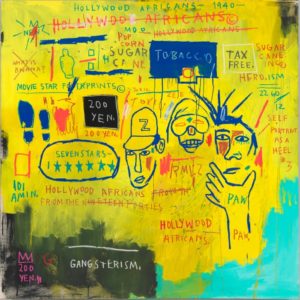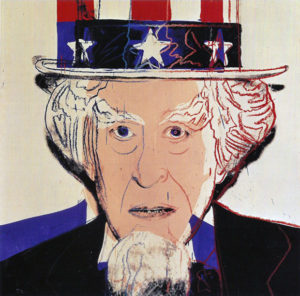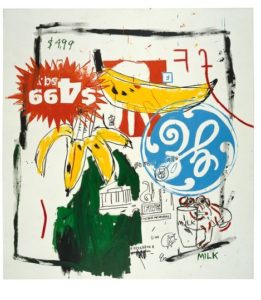“Jean-Michel Basquiat, Hollywood Africans, 1983.” Hopper Drawing | Whitney Museum of American Art, whitney.org/WatchAndListen/1326.
The Whitney’s website offers a high resolution picture of the painting along with a recording of Thelma Golden, Director and Chief Curator, explaining the origins of the painting. She explains that Basquiat painted this after he took a trip to California with a few other artists. She says that it was Hollywood’s racist portrayals of African Americans, such as in the film “Tarzan” that inspired this painting. This supports my thesis as it elaborates on Basquiat’s of American culture, both the racism that existed behind it, and the power structure dynamics of Hollywood.
Laing, Olivia. “Race, Power, Money – the Art of Jean-Michel Basquiat.” The Guardian, Guardian News and Media, 8 Sept. 2017, www.theguardian.com/artanddesign/2017/sep/08/race-power-money-the-art-of-jean-michel-basquiat.
This article chronicles Basquiat’s life and origins as an artist. It explains he first started as a graffiti and street artist, directly relating to my thesis. Then it discusses the themes present in Basquiat’s work, such as racism and hierarchies in America. The article then discusses the artist’s rise in the art world and his eventual relationship with Andy Warhol, again relating directly to my thesis.
Teeman, Tim. “The Whitney Museum’s Andy Warhol Show Is More Than His Greatest Hits.” The Daily Beast, The Daily Beast Company, 7 Nov. 2018, www.thedailybeast.com/the-whitney-museums-andy-warhol-show-is-more-than-his-greatest-hits?ref=scroll.
This article discusses the new Warhol exhibit at the Whitney and chronicles the artists life. It writes of the themes present in Warhol’s work, such as advertisements, hero culture, celebrity culture, all relating to my thesis. The article writes of Warhol’s collaborations with Jean-Michel Basquiat, which is in direct relation to my thesis.
“Warhol and Basquiat: The Art World’s Most Notorious Bromance.” Sleek Mag, www.sleek-mag.com/article/warhol-basquiat-bromance/.
This article focuses on the relationship that existed between Andy Warhol and Jean-Michel Basquiat. It traces the artists relationship from the highly notarized moment when the two first met when Warhol was out to lunch and Basquiat sold him a few postcards, took their picture together, and would paint the photo immediately after it was taken. When he completed the painting he gifted it to Warhol who was impressed by Basquiat’s work and their friendship began. The article stays with the artist’s relationship to the end, when Warhol dies and Basquiat is devastated by the loss. This article relates to my thesis as it gives me a clearer understanding about the two artists featured in my thesis.
Warhol, Andy. “Andy Warhol Marilyn Monroe 1967.” Lee Bontecou. Untitled. 1959 | MoMA, www.moma.org/collection/works/61240.
The museum’s website offers a high resolution photo of the painting along with a brief explanation of Warhol’s history and process for how he made the painting. Since this painting focuses on Warhol’s exploration of celebrity culture it directly relates to my thesis. The website also quotes Warhol about his multiple prints of celebrities, “The more you look at the exact same thing, the more the meaning goes away, and the better and emptier you feel.” Again highlighting Warhol’s themes present in his art that create a unique American identity.
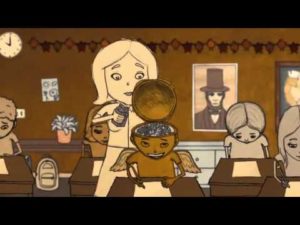

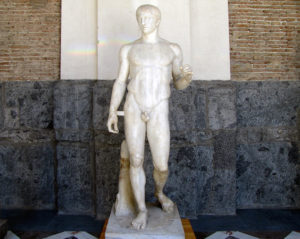
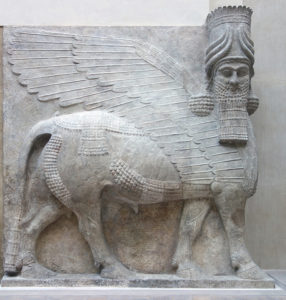


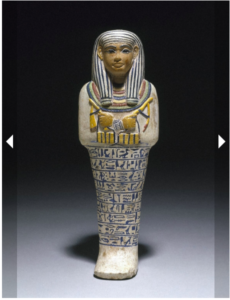
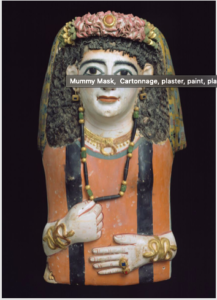 Mummy Mask
Mummy Mask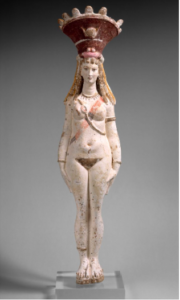 Figure of Isis- Aphrodite , Met Museum
Figure of Isis- Aphrodite , Met Museum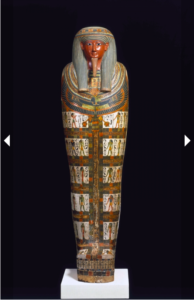 Brooklyn Museum, Cartonnage of Nespanetjerenpere.Egypt, probably from Thebes. Charles Edwin Wilbour Fund
Brooklyn Museum, Cartonnage of Nespanetjerenpere.Egypt, probably from Thebes. Charles Edwin Wilbour Fund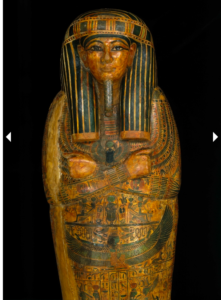 Brooklyn Museum, Coffin and Mummy Board of Pa- seba-khai-en-iept. Egypt, From Thebes, Charles Edwin Wilbour Fund
Brooklyn Museum, Coffin and Mummy Board of Pa- seba-khai-en-iept. Egypt, From Thebes, Charles Edwin Wilbour Fund
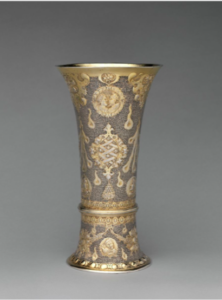 The art work itself looks like its dripping in gold. It has a
The art work itself looks like its dripping in gold. It has a  The difference between Renaissance and Baroque art is that m
The difference between Renaissance and Baroque art is that m